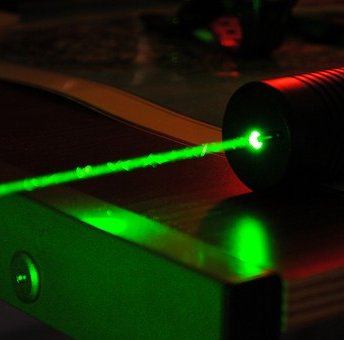Micromachining with Ultrafast Pulse Lasers
What’s the difference between pico and femto laser sources?
 Ultrafast (ultrashort) pulse laser technology has been behind the development of laser micromachining for over 10 years. Fiber lasers were the machines of choice from the outset but with the development of ultrafast pulse (UFPL), came two new(ish) kids on the block – pico and femto.
Ultrafast (ultrashort) pulse laser technology has been behind the development of laser micromachining for over 10 years. Fiber lasers were the machines of choice from the outset but with the development of ultrafast pulse (UFPL), came two new(ish) kids on the block – pico and femto.
UFPLs produce higher quality cuts and can process more types of materials as well as more problematic ones - from sapphires to Teflon – than slower pulse fibre lasers. There are two types of UFPLs: Picosecond (1x10-12 second) and Femtosecond (1x10-15 second). The pulses these lasers produce are so short that the energy they direct at a material cannot escape so they effectively ‘cut cold’. Essentially, this means that the material goes straight from a solid to a gas phase, skipping the melt or burn phase.
The benefits of minimal heat are:
- No debris left on the work piece
- No sub-surface cracking
- No crystalline structure formation
- No post-processing to repair heat damage
- Parts as small as 31nm can be processed
With this combination of minimal heat and precision, UFPL lasers are ideal in producing stents and in high quality/low volume sectors such as watchmaking and jewellery.
Technology leap, price leap
With a quantum leap in technology came a parallel jump in cost. When the first UFPL machines were launched around 7 years ago, picosecond lasers cost twice as much as their fiber counterpart, femtosecond laser three times, The price difference between fiber and UFPL has dropped considerably since then but if heat and less precision is not an issue, fiber is the cheapest and most reliable route to take.
Pico v Femto
In micromachining applications, there is very little difference between pico and femto performance. Because they are less complex, pico lasers are cheaper so there is a noticeable cost benefit. Pico lasers are more flexible so can be scaled in power to 50W or more and pulse repetition rates to 500 Hz or more. This makes them considerably more productive. However, users such as university research departments are willing to pay the premium for femto’s perceived edge in precision.
For details and advice on the most suitable laser for your specific need, please contact sales@tlm-laser.com